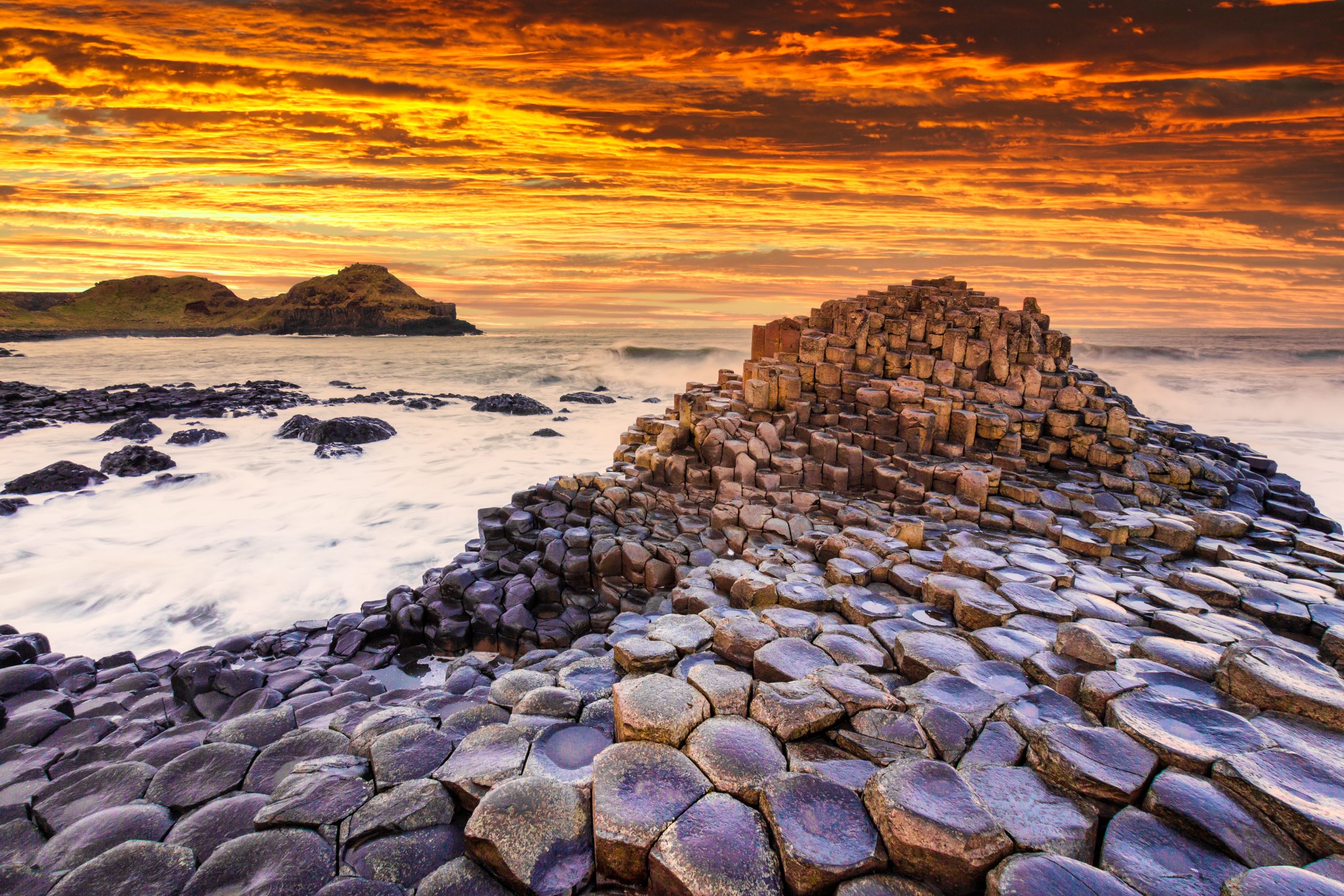A researcher believes that North Ireland's famous landmark, the Giant's Causeway, formed in days and not thousands of years.
This hexagonal pillar formation was said to have been built by a giant, according to local legend. The geological explanation of the thousands-year formation process has now been questioned by a new theory. There are around 40,000 hexagonal stone columns that slope gently into the sea at the Giant’s Causeway, a popular tourist destination in Northern Ireland every year. Many theories have been proposed about the formation of the stones, including that they were built by a mythical giant named Finn McCool, and you can read more about that theory by clicking here.
The most recent theory, however, was proposed by Dr. Mike Simms, the curator of natural sciences at the NI National Museums. It is unclear why extraordinary geological features are only found at sea level, according to Dr. Simms. Having this in mind, he concluded that they were caused by an event that only lasted a few days instead of thousands of years.
More than six kilometers of Northern Ireland’s coast are occupied by the Giants Causeway. The site was formed more than 50 million years ago during the Paleogene Period and has been a UNESCO World Heritage Site since 1986. In recent decades, scientists have widely accepted the explanation that the mountains were formed when lava accumulated at greater depths than usual in a river valley. In the process of cooling and solidifying, the thick layer of lava formed these columns.
Despite this, Simms has identified old lava layers on either side of the inward-sloping causeway which has not been eroded away. To explain this, I use the analogy of a cake, Dr. Simmons said. When you erode a river valley, you reveal layers underneath it, much like when you cut away a layer of cake. The rock layers actually slope towards the causeway, like a badly baked cake that has sunk in the middle, based on my interpretation, he revealed. Dr. Simmons actually believes that the ground sank when the lava rose and erupted on the surface, eventually forming the odd formations.
By filling the depression with lava, conditions were created for the columns to form. The erosion process of creating a river valley takes many thousands of years, but this probably only took a few days,” he said. A field trip he led to the World Heritage site in 2012 inspired Simms to think about this theory. “I owe a special debt of gratitude to a young Brazilian geologist who was on a field trip I was leading in 2012,” he said. Having heard him question how long it would take to erode the supposed river valley, I realized the evidence was clearer to me now. Despite visiting the Giant’s Causeway many times before, I had simply accepted the above theory up until that point.” “This shows that even world-famous landmarks like this can be the source of new discoveries,” he concluded.
Have something to add? Visit Curiosmos on Facebook. Join the discussion and participate in awesome giveaways in our mobile Telegram group. Join Curiosmos on Telegram Today. t.me/Curiosmos

